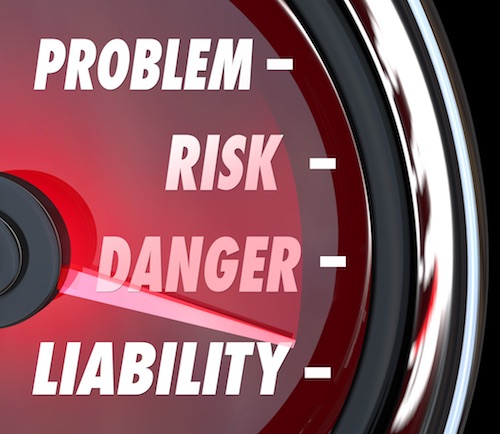CAFC Says Generic’s Public Statements Make Induced Infringement Claims Plausible
“Clarity and consistency in a generic manufacturer’s communications regarding a drug marketed under a skinny label may be essential in avoiding liability for induced infringement.” – CAFC opinion
The U.S. Court of Appeals for the Federal Circuit (CAFC) issued a precedential decision today reversing a district court’s grant of Hikma Pharmaceuticals’ motion to dismiss Amarin Pharma, Inc.’s complaint against it for induced infringement.
Amarin claimed Hikma induced infringement of its “icosapent ethyl” product, an ethyl ester of an omega-3 fatty acid commonly found in fish oils and marketed as Vascepa. U.S. District Court for the Western District of Texas Judge Alan Albright was sitting by designation on the CAFC panel, which also included CAFC Chief Judge Moore and the opinion’s author, Judge Lourie.
The U.S. District Court for the District of Delaware initially declined to adopt a magistrate judge’s recommendation to deny Hikma’s motion to dismiss under Federal Rule of Civil Procedure 12(b)(6). Hikma argued that Amarin “had failed, as a matter of law, to allege facts that Hikma had taken active steps to specifically encourage infringement.” The district court ultimately agreed with Hikma and granted the motion to dismiss, finding that Amarin failed to plead inducement based on either Hikma’s skinny label or its public press release/ statements.
On review at the CAFC, however, the court noted that the case had reached it “at its most nascent stage… where we are tasked with reviewing allegations, not findings, for plausibility, not probability,” and thus, none of its prior cases in the space were dispositive, said the opinion. Then, turning to the facts of the case, the CAFC said that Amarin’s allegations concerning Hikma’s label, in combination with Hikma’s public statements and marketing materials, “at least plausibly state a claim for induced infringement.”
Vascepa was approved by the Food and Drug Administration (FDA) in 2012 for the treatment of severe hypertriglyceridemia (“the SH indication”). Then, in 2019, it was approved by the FDA for a second indication, as “a treatment to reduce cardiovascular risk (i.e., myocardial infarction, stroke, coronary revascularization, and unstable angina requiring hospitalization) in patients having blood triglyceride levels of at least 150 mg/dL (‘the CV indication’)”. Hikma was granted an abbreviated new drug application (ANDA) in 2020 for a “skinny label” that did not include the CV indication.
While the CAFC noted that “it is undisputed that the ‘Indications & Usage’ section of Hikma’s label does not provide an implied or express instruction to prescribe the drug for the CV indication,” Amarin nonetheless argued that other portions of the label would be read by physicians to indicate that the drug could be prescribed for CV risk. Hikma also removed a CV Limitation of Use from its label despite not being approved for the CV indication as well as its warning of potential side effects for patients with cardiovascular disease, which could also be interpreted by physicians to meant it could be used for off-label CV indication.
The CAFC gave credit to Hikma’s argument that this silence on the CV indication cannot plausibly support the elements of active inducement, explaining that, if considered alone, the court might agree with the district court and Hikma that the label does not encourage infringing use as a matter of law. However, it was in combination with certain public statements and marketing materials that the court considered the label, and those statements further convinced the CAFC that there was a plausible claim for induced infringement.
Specifically, Hikma’s press releases prior to November 2020 “consistently referred to Hikma’s product as a ‘generic equivalent to Vascepa®,’ ‘generic Vascepa®,’ or ‘Hikma’s generic version of Vascepa®,’” without indicating that it was “AB-rated,” or therapeutically equivalent only for the indications on the label. The press releases also referred to Vascepa as indicated “in part” for the SH indication. Amarin argued these statements suggested Vascepa was indicated for more than one use and that its Hikma’s product was a generic version of Vascepa. Amarin also said that Hikma referred to sales figures for Vascepa “that Hikma knew were largely attributable to the off-label CV indication.”
Ultimately, said the CAFC, “many of the allegations depend on what Hikma’s label and public statements would communicate to physicians and the marketplace….As we observed in GSK, that is a question of fact—not law—and is therefore not proper for resolution on a motion to dismiss.”
The court rejected Hikma’s argument that a reversal would “effectively eviscerate section viii carve-outs,” explaining that its holding “is limited to the allegations before us and guided by the standard of review appropriate for this stage of proceedings.”
However, added the court:
“What we can also say is that clarity and consistency in a generic manufacturer’s communications regarding a drug marketed under a skinny label may be essential in avoiding liability for induced infringement.”
Chad Landmon of Axinn, Veltrop & Harkrider LLP said the case will have an impact on generic and biosimilar companies’ marketing activities.
“The pharma and biologics industry has been paying close attention to this case, and the decision will certainly cause generic and biosimilar companies to carefully consider any press releases and marketing materials that they put together when planning to go to market with a product that is skinny labeled,” Landmon said.
While he noted that the court was careful to state that this was not a typical Hatch-Waxman case and that it therefore shouldn’t have broad effect, it’s still “a stark reminder to the industry about how important it is to carefully consider skinny label strategy.”
Eileen McDermott
Eileen McDermott is the Editor-in-Chief of IPWatchdog.com. Eileen is a veteran IP and legal journalist, and no stranger to the intellectual property world, having held editorial and managerial positions at […see more]







